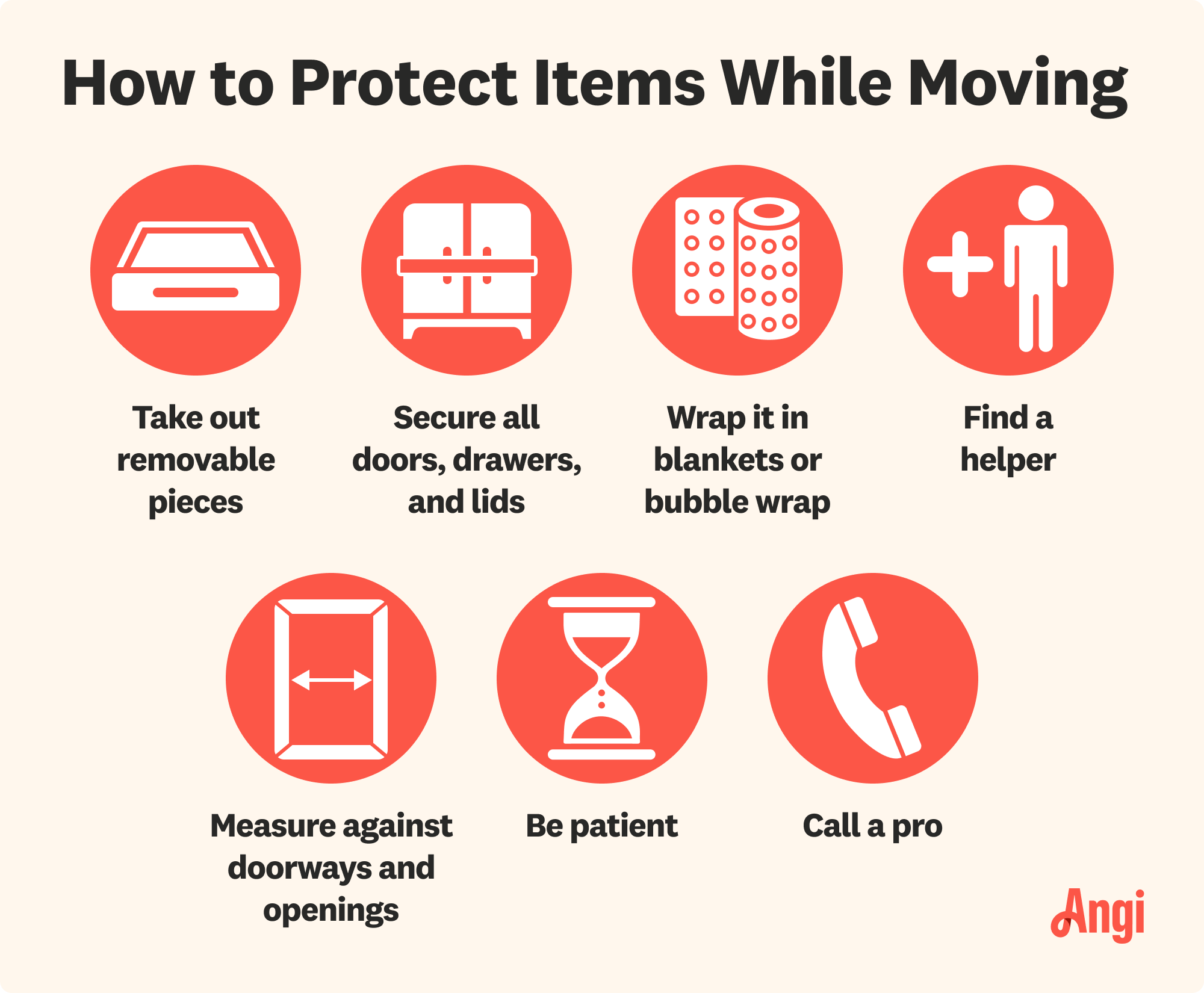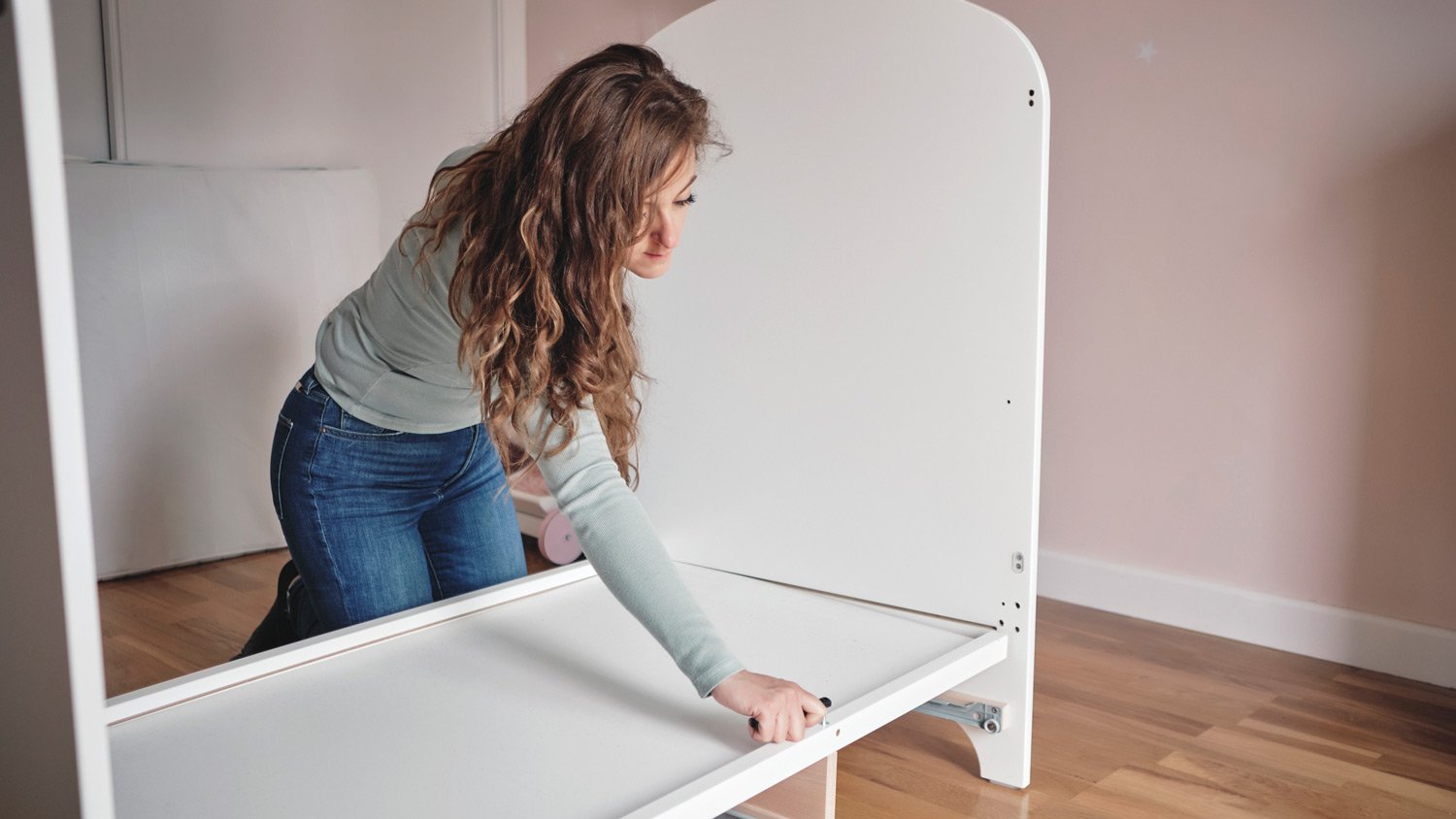
Learn about storage unit cost based on the size, type, and features you need to safely keep your household and other possessions.
Keep your furniture wrapped tight during your big move


So, a move is in your future. Have you thought about how to wrap furniture for moving to protect pieces like your couch or favorite armchair?
Wrapping and packing supplies are some of the hidden fees associated with moving, but you can spend wisely once you learn the best way to wrap your pieces. Of course, if you hire a local moving company, they’ll have wrapping supplies on hand. But if you DIY, follow these tips to help you wrap your furniture like a pro.
It's important to move heavy furniture safely to avoid personal injury or property damage. The safest option is to hire professional movers with the right tools, equipment, and experience to move heavy furniture efficiently.

Your furniture’s safe delivery depends on the wrapping and packing materials, so it’s important to choose the right supplies. You’ll need these popular options to safeguard your furniture while it's in the moving truck or shipping crate.
Bubble wrap
Stretchable plastic wrap
Moving blankets
Sofa and mattress covers
Corrugated cardboard sheets
Sealable plastic bags
Packing tape
If you’ve hired a top-rated moving company to transport your household goods, they’ll likely keep an inventory list to document the condition of your items. Before the movers arrive, take photos and videos of your furniture so you have a record of its condition before loading. If you’re tackling a DIY move, the pictures and videos will help you with furniture placement and reassembly in your new home.
A new home is an exciting change and a chance to start fresh. Wrapping your furniture guarantees clean and tidy items when you unwrap them later. To avoid damaging the finish, follow these cleaning tasks before wrapping.
Clean food residue from furniture
Use a mild furniture soap on wood surfaces
Wipe glass clean
Spot clean furniture upholstery fabric if needed
Dust cracks and crevices

It's easier to wrap, box, and load furniture that breaks down into smaller pieces. Disassemble as many items as you can to save your door frames and walls from dents and nicks. Use sealable plastic bags to keep the small parts together. Then, tape the bags to the underside or backs of the furniture to ensure it doesn’t get lost.
Remove knobs, casters, and other hardware
Unscrew doors with glass to wrap separately
Disconnect legs from tables and sofas
Disassemble beds
Professional moving companies and DIY movers alike use a combination of stretchable plastic wrap, moving blankets, bubble wrap, and cardboard to protect furniture. Determining which combination works best for you depends on the amount, size, and type of furniture you have. Don’t be shy about mixing and matching your packing materials to get the perfect fit.
Stretchable plastic wrap is a must-have tool for your move. It clings to furniture and itself to protect your furniture. Thanks to its rubber band-like features, it also keeps drawers and doors shut during the move. You’ll need an extra set of hands to help you wrap the furniture because the roll is large. Stretchable plastic wrap should be used to wrap the following:
Secures doors, drawers, and panels, if unremovable
Protects fabric pieces from tears and scratches
Bundles smaller pieces of furniture together
Shields sofa and mattress covers
Moving blankets aren’t your average cuddly, warm bed covers. Instead, they're thick and engineered to protect your furniture from bumps and scuffs during transportation. You can use one or two blankets per furniture item, depending on its size and shape.
First, drape the moving blanket over your items, and then tuck the blanket to create “corners” whenever possible. Secure the blankets with packing tape and stretchable plastic wrap. You can use moving blankets for most furniture items, but they’re handy for covering exposed areas of furniture, like the backsides, and protecting doorways.
Everyone loves the quick snap-pop of bubble wrap, and its protective qualities for fragile items are hard to beat. Bubble wrap works great for most items, but be careful if your furniture has a delicate finish, like faux paint or antique glass, because the plastic could stick to it.
It's a good idea to layer the furniture with packing paper first before wrapping with bubble wrap. Only use anti-static bubble wrap for your electronics to avoid damage. These furniture items benefit from bubble wrap:
Wooden furniture legs, if not removable
Glass tabletops and furniture
Unremovable glass furniture inserts, like shelving or door panels
Mirrors
Ornamental pieces on furniture, like carvings
Corrugated cardboard is an all-purpose moving tool that’s perfect in a pinch. It adds a shock-absorbing layer in between items. Here’s how to add cardboard into your wrapping strategy:
Additional coverage for unprotected areas of furniture
Sandwich glass and mirrors between two sheets
Create corner protectors for wooden and glass furniture
An extra layer of protection between furniture in the moving truck
As a make-shift furniture dolly to move furniture across the floor
The average cost to hire movers for an entire house is between $880 and $2,570. It’s much cheaper if you’re only moving furniture, with an average cost between $70 and $600. The exact amount depends on several factors, including distance, the number of items, and add-on services like moving insurance and furniture disassembly. Long-distance moves are significantly more expensive, ranging from $2,700 to $10,000.
Moving furniture yourself is cheaper than hiring a local moving company, but the DIY route isn’t an option for everyone, and hiring professionals has several benefits. They’ll get the job done quickly and safely, and their experience reduces the risk of furniture getting damaged. You can also purchase insurance to recoup the value of your furniture should any accidents occur. Additionally, hiring movers protects people from injuring themselves, especially if they don’t have proper technique.
From average costs to expert advice, get all the answers you need to get your job done.

Learn about storage unit cost based on the size, type, and features you need to safely keep your household and other possessions.

The cost to move a tiny house depends on its weight, distance, and what type of moving equipment is required. Our guide can help you budget for your move.

Planning and budgeting for an office move? Find out the average office moving costs, from moving office equipment to IT expenses.

Packing dishes is often an overlooked part of the moving process. Learn how to pack dishes for moving in a safe and strategic way with this DIY guide.

Meta: Moving long distance can be stressful, but it’s much easier with the right interstate moving company. Read on to learn how to find long-distance movers.

If the refrigerator in your new home doesn’t fit, or you have a strong attachment to your current one, you’ll need a strategy for shipping it safely. Here’s how to properly ship a refrigerator and tips for avoiding hits and dings along the way.